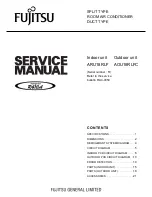
50
INSTALLATION OPERATIONS AND MAINTENANCE MANUAL - RXC/Hi SERIES
It is therefore necessary to:
• Avoid refills with oil different from the specific one already charged in the compressor.
• For units using refrigerant gas R134a or R410A, in case there are leakages such as to make the circuit also partially discha-
ged, avoid refilling the missing refrigerant gas, but discharge the unit completely, recuperating the refrigerant gas for suc-
cessive disposal. After vacuuming the circuit, recharge it with the suitable quantity.
• In case of replacement of any part of the refrigerant circuit, do not leave the circuit open for more than 15 minutes.
• In particular, in case of compressor replacement, complete the operation within the time indicated above, after removing
the rubber caps.
• In case rubber caps.of compressor replacement, we recommend to wash the refrigerant circuit with suitable products.
We also recommend to insert, for a determined time, an anti-acid filter.
• In vacuum conditions, do not supply the compressor electrically; do not compressr air inside the compressor.
22. DECOMMISSIONING
22.1 Disconnecting the unit
All decommissioning operations must be carried out by authorised personnel in accordance with the national legislation in
force in the country of destination.
• Avoid spillage or leakage into the environment.
• Before disconnecting the unit, recover if present:
○
the refrigerant gas;
○
brine mixtures from the hydraulic circuit;
○
the compressors lubricant oil.
Pending decommissioning and disposal, the machine can also be stored outdoors, provided that the unit has the electrical and
hydraulic circuits intact and closed.
22.2 Decommissioning, disposal and recycling
The frame and the components, if unused, must be demolished and divided according to their type, in particular copper and
aluminium which are present in fair quantity inside the unit.
All materials must be recovered or disposed of in accordance with the relevant national regulations.
22.3 RAEE Directive (EU only)
• The RAEE Directive requires that the disposal and recycling of electrical and electronic equipment must be managed through
a specific collection, in appropriate centres, separate from mixed urban waste.
•
The user is obliged not to dispose of the equipment, at the end of its working life, as urban waste, but to comply with
Directive 2012/19/EU at European level and with Legislative Decree 49/2014 at national level.
• Units covered by the RAEE Directive are identified by the symbol shown above.
• Manufacturer can supply additional information on request, in particular it will indicate the reference certification body
according to RAEE.



































